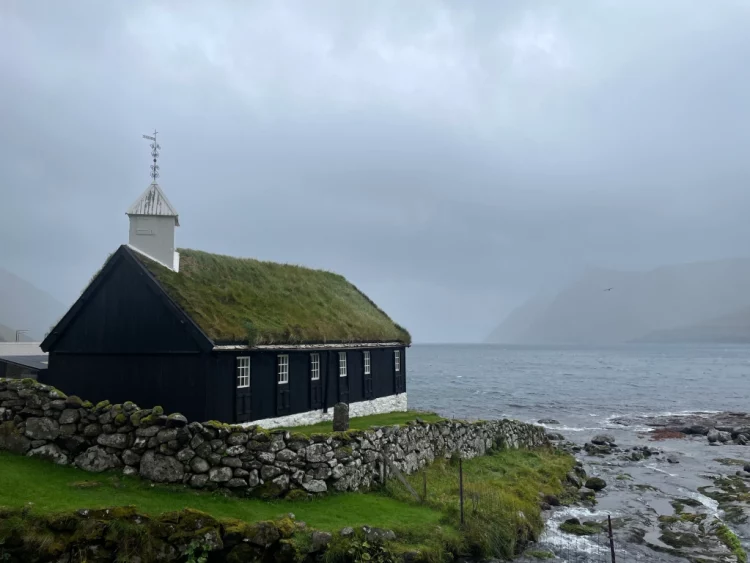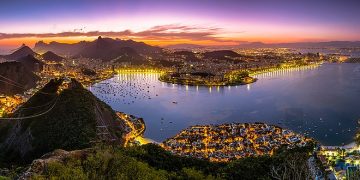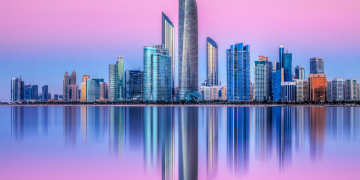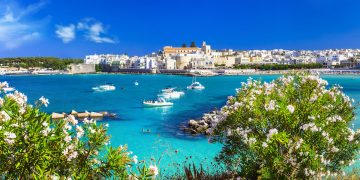Introduction: The Allure of the Faroe Islands
Imagine a place where dramatic cliffs rise from the sea, waterfalls cascade down lush green hills, and the air is crisp and fresh—a place that feels like the edge of the world. This is the Faroe Islands, a small yet strikingly beautiful archipelago in the North Atlantic, located between Iceland and Norway. Often overlooked in favor of more famous destinations, the Faroe Islands have been quietly emerging as one of the most exciting travel destinations for nature lovers.
In 2024, the Faroe Islands are quickly gaining recognition for their untouched beauty, unspoiled landscapes, and rugged charm. As a travel destination, it offers something entirely unique: a place where nature is still in control. If you’ve ever wanted to experience dramatic natural beauty without the crowds, the Faroe Islands are becoming the place to be.
With a population of just around 50,000 people spread across 18 islands, this autonomous region of Denmark remains largely untamed. It’s a place that invites travelers to slow down, breathe deeply, and connect with the raw beauty of the earth. Whether you’re an avid hiker, a photographer, or simply someone who loves to immerse yourself in nature, the Faroe Islands have a way of taking you to a place that feels like a hidden paradise, waiting to be explored.
Must-Visit Scenic Spots in the Faroe Islands
While the entire archipelago is filled with stunning vistas, there are a few places that stand out as absolute must-visits for anyone making the trek to the Faroe Islands in 2024. These iconic spots will allow you to experience the island’s diverse landscapes—from dramatic cliffs to serene lakes, each more breathtaking than the last.
1. Mulafossur Waterfall
One of the most photographed landmarks in the Faroe Islands, the Mulafossur Waterfall is a stunning sight. Situated on the island of Vágar, the waterfall tumbles down into the ocean below, creating a dramatic scene that perfectly encapsulates the raw beauty of the Faroe Islands. The waterfall is located just outside the village of Gásadalur, which is itself one of the most picturesque villages in the region. The backdrop of the steep mountains and the vast ocean make it a popular spot for photographers and travelers alike.
Tip: For the best photo opportunities, visit during the golden hours—early morning or late afternoon—when the light adds an extra layer of magic to the scene.
2. Lake Sørvágsvatn
On the island of Vágar, you’ll find Lake Sørvágsvatn, also known as the “Lake Above the Ocean.” This optical illusion is a must-see for any nature lover, as the lake appears to hover just above the sea when viewed from a certain angle on the cliffs surrounding it. The lake is the largest in the Faroe Islands, and the surrounding landscape is just as breathtaking. Hiking to the lake’s viewpoint is a rewarding experience, offering dramatic views of the surrounding cliffs, ocean, and distant islands.
Tip: Be sure to visit the lake on a clear day to fully appreciate the optical illusion and the stunning vistas that surround the lake.
3. Mykines: The Island of Seabirds and Cliffs
The island of Mykines is perhaps the most dramatic of all the Faroe Islands. Known for its towering cliffs, lush green valleys, and large seabird colonies, Mykines is the perfect destination for those looking to experience the unspoiled natural beauty of the Faroe Islands. The island is home to thousands of puffins, making it one of the best places in Europe to see these charming birds. As you hike along the cliffs, you’ll be treated to panoramic views of the ocean and the surrounding islands, making Mykines a paradise for hikers and wildlife enthusiasts.
Tip: The hike to the lighthouse on Mykines is a challenging but incredibly rewarding journey, offering some of the best views of the island.
4. Gásadalur Village
While Mulafossur Waterfall is one of the main attractions of Gásadalur Village, the village itself is worth a visit. Nestled in a secluded valley and surrounded by towering cliffs, this tiny village offers visitors a glimpse into life in one of the most remote parts of the world. Until 2004, Gásadalur was only accessible by boat, making it one of the most isolated communities in the Faroe Islands. Today, it’s still a peaceful, picturesque village, and the view of the village with the waterfall in the background is iconic.
Tip: Take time to stroll through the village and enjoy the peaceful atmosphere before heading to the nearby waterfall for your perfect photo.
Best Hiking Trails and Viewpoints to Capture Stunning Landscapes
The Faroe Islands are a hiker’s paradise. Whether you’re an experienced hiker or just someone who loves a good walk in nature, there are countless trails and viewpoints that showcase the best of the islands’ wild beauty.
1. The Hike to the Top of Slættaratindur
At Slættaratindur, the highest peak in the Faroe Islands (880 meters), you’ll find one of the best hikes in the region. The hike to the summit is moderately challenging, but once you reach the top, the 360-degree views of the islands are absolutely breathtaking. From this vantage point, you can see the surrounding mountains, cliffs, and valleys as well as the ocean stretching out to the horizon.
Tip: Try to visit on a clear day for the best views, but be prepared for quickly changing weather conditions in this mountainous region.
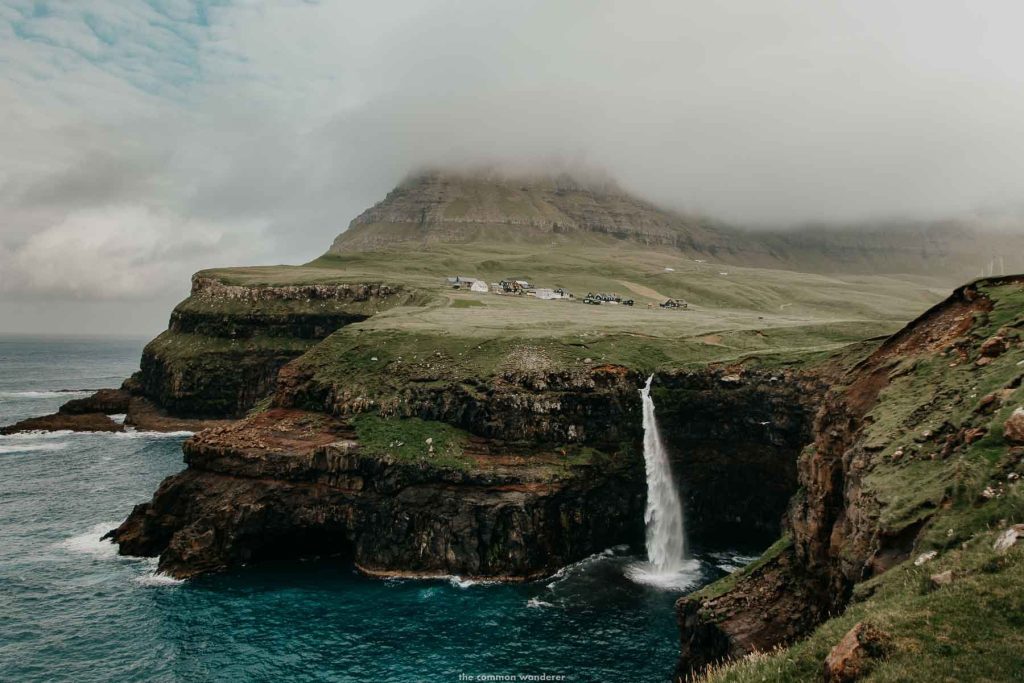
2. The Lakes of Tjørnuvík and the View of the Giant and the Witch
For those looking for a less strenuous but equally rewarding hike, the trail to Tjørnuvík, a village on the island of Streymoy, offers a fantastic mix of coastal views, dramatic cliffs, and history. From Tjørnuvík, you can see the famous Giant and the Witch rock formations, which are steeped in Faroese legend. The hike to the village and the surrounding cliffs takes about 2-3 hours, providing a leisurely experience with plenty of opportunities for breathtaking photos.
Tip: The village itself is charming and offers great local food, so be sure to stop for a bite after the hike.
3. The Funningur to Saksun Trail
The trail between the villages of Funningur and Saksun offers hikers an excellent opportunity to experience the beauty of the Faroe Islands’ remote villages, green valleys, and dramatic coastlines. The path meanders along rivers and cliffs, offering expansive views of the surrounding landscape. Along the way, you’ll pass traditional Faroese houses with grass roofs, adding an authentic touch to the experience.
Tip: This trail is fairly easy to hike, making it perfect for beginners or those looking for a leisurely day outdoors.
Tips on Getting Around the Faroe Islands and Sustainable Travel Practices
While the Faroe Islands are small in size, they are large in terms of the experiences they offer. To fully explore the islands and get the most out of your trip, it’s important to understand how to get around efficiently and responsibly.
Getting Around
- Car Rental: Renting a car is one of the best ways to explore the Faroe Islands. With a car, you can easily visit remote villages, hiking trails, and scenic viewpoints that might otherwise be inaccessible.
- Public Transport: The islands have a network of buses that connect the major towns and villages, but bus schedules can be limited, especially in more remote areas. It’s best to plan your journey in advance if you plan to rely on public transport.
- Ferries: Many of the islands are connected by ferries, and taking one can be a scenic and pleasant way to travel between islands. The ferry rides often offer beautiful views of the coastline and surrounding sea.
Tip: Book your ferry tickets in advance, especially during the summer months, when demand is higher.
Sustainable Travel Practices
The Faroe Islands are committed to maintaining their natural beauty, and sustainable travel practices are increasingly important. Here are a few ways you can ensure you travel responsibly:
- Respect Nature: Stay on marked paths while hiking to protect fragile ecosystems, and avoid disturbing wildlife, especially seabirds and puffins.
- Waste Management: Bring your trash with you and dispose of it properly, as there are limited waste disposal facilities in some remote areas.
- Support Local Businesses: Choose locally-owned accommodations, restaurants, and tour operators to help sustain the local economy.
How to Enjoy the Faroe Islands in All Seasons
While the Faroe Islands are known for their dramatic beauty year-round, each season offers something different.
- Winter: The winter months (December to February) bring snow-capped mountains and a serene atmosphere to the islands. While some trails may be closed due to snow, this is a magical time for photography and cozying up in local cafés.
- Spring: In the spring (March to May), the weather begins to warm up, and the islands come to life with lush greenery and wildflowers. This is an excellent time for hiking and birdwatching.
- Summer: The summer months (June to August) are the most popular for tourists, thanks to milder weather and longer days. Expect more tourists, but the islands are perfect for hiking, festivals, and outdoor activities.
- Autumn: Autumn (September to November) offers vibrant fall foliage and a quieter atmosphere. This is a great time for photography and enjoying the islands without the summer crowds.
Conclusion: A Hidden Gem Waiting to Be Discovered
The Faroe Islands are a hidden gem for nature lovers in 2024, offering rugged landscapes, untouched beauty,
and opportunities for adventure at every turn. Whether you’re hiking through dramatic cliffs, visiting picturesque villages, or simply soaking in the tranquility, this remote archipelago has something to offer every traveler. The Faroe Islands are waiting to be explored—so pack your bags, and get ready for an unforgettable journey into one of the world’s most stunning and untouched destinations.


